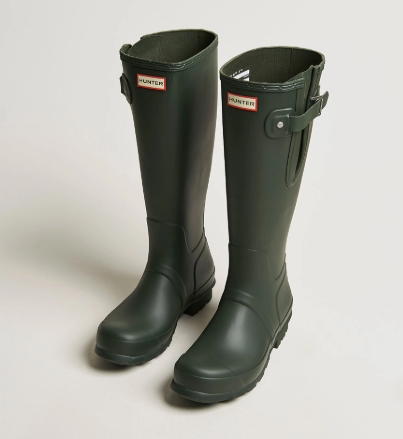As someone who loves uncovering the stories behind the brands we often take for granted, I recently had the opportunity to peek into the creative world of Hunter. Walking into their design studio felt like stepping into a space where history, innovation, and attention to detail intersect. Observing the designers’ workstations, sketches, and even some hunter boots sale za prototypes that hadn’t been released yet gave me a new appreciation for how much care goes into each pair of boots.
The first thing that caught my attention was the organized chaos of the studio. Sketches covered the walls, some rough and experimental, others meticulously detailed. Samples of rubber soles, various strap designs, and waterproof materials were scattered across tables, all waiting for their turn to become a functional yet stylish boot. It was evident that each workstation was more than a workspace—it was a hub of experimentation, creativity, and problem-solving, all aimed at perfecting the balance between durability, comfort, and style.
One of the most striking parts of my visit was seeing prototypes that were still in testing phases. There was a new boot design featuring an adjustable strap system and a slightly modified sole meant to improve grip on slippery surfaces. At first glance, the changes seemed subtle, almost imperceptible. But as the designer explained the months of trials, feedback from outdoor enthusiasts, and careful material selection, I realized how deliberate every single detail is. Each curve, seam, and texture has a purpose: ensuring that the wearer’s experience is safe, comfortable, and enjoyable.
Watching the design process unfold, I noticed small signs of dedication that often go unseen by the public. Sticky notes with reminders about traction, notes about waterproofing, and prototypes that didn’t pass rigorous testing were kept on display—not discarded—as lessons for future iterations. It was inspiring to witness a brand that treats every misstep as a learning opportunity, always pushing toward perfection without losing sight of its heritage.
The history of Hunter also shone through in their current designs. Founded over a century ago to protect feet from harsh weather conditions, the brand has consistently prioritized functionality while gradually embracing modern aesthetics. Seeing both archival sketches and forward-thinking prototypes side by side highlighted how Hunter honors its legacy while innovating for contemporary needs. The designs aren’t just boots—they’re a culmination of experience, observation, and purpose.
One story shared by the designers stayed with me: the development of a boot for long outdoor treks. The team followed a group of hikers through muddy trails, rocky paths, and unpredictable weather to observe how the boots performed in real conditions. Every observation, from how the straps flexed to how the soles gripped different surfaces, informed the final design. It was a reminder that Hunter isn’t about flashy appearances—it’s about creating products that truly meet the demands of those who rely on them.
By the end of my visit, I realized that Hunter boots carry more than just materials and craftsmanship—they carry empathy. Each pair is designed with the wearer in mind, reflecting countless hours of observation, iteration, and thoughtful design. When you slip into a pair of hunter boots sale za, you’re not just wearing footwear; you’re stepping into a story of heritage, care, and innovation.
For anyone who appreciates the intersection of history, design, and practicality, Hunter offers more than boots—they offer a tangible connection to a philosophy of quality and thoughtful craftsmanship. Observing the process behind the scenes transformed the way I view each pair I own, turning them into more than just shoes—they’re companions for adventures, rain or shine, crafted with intention and care.
